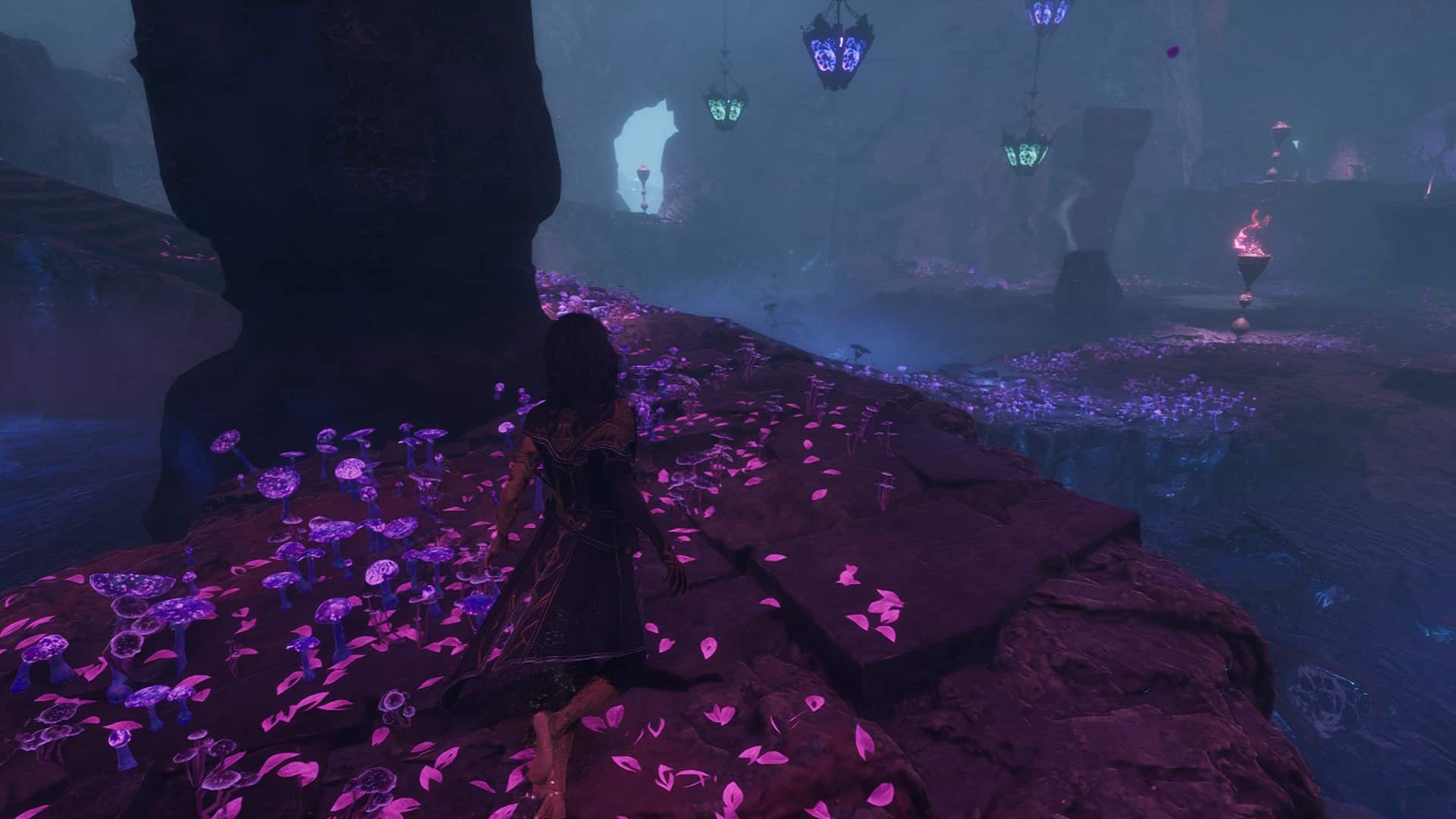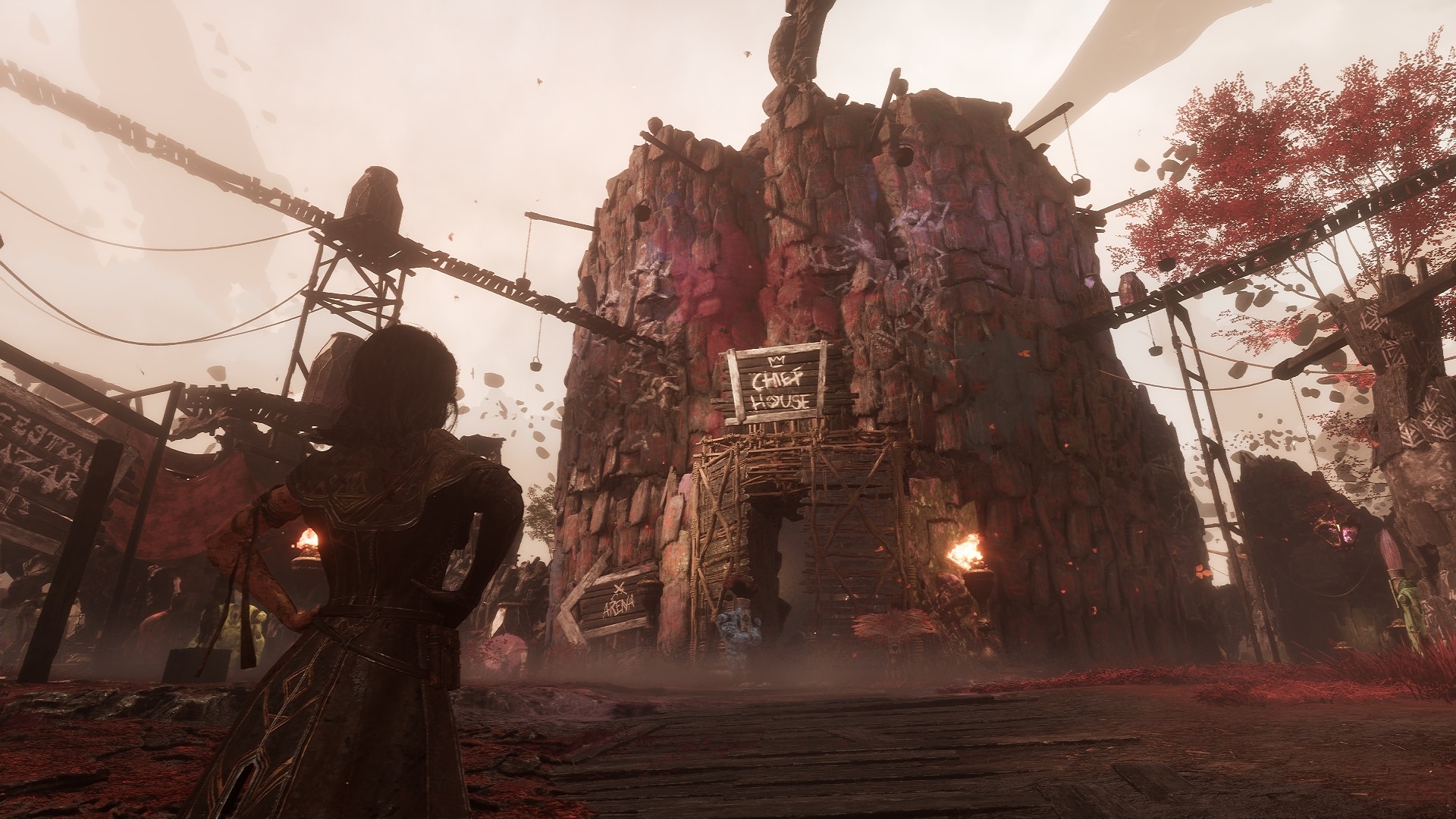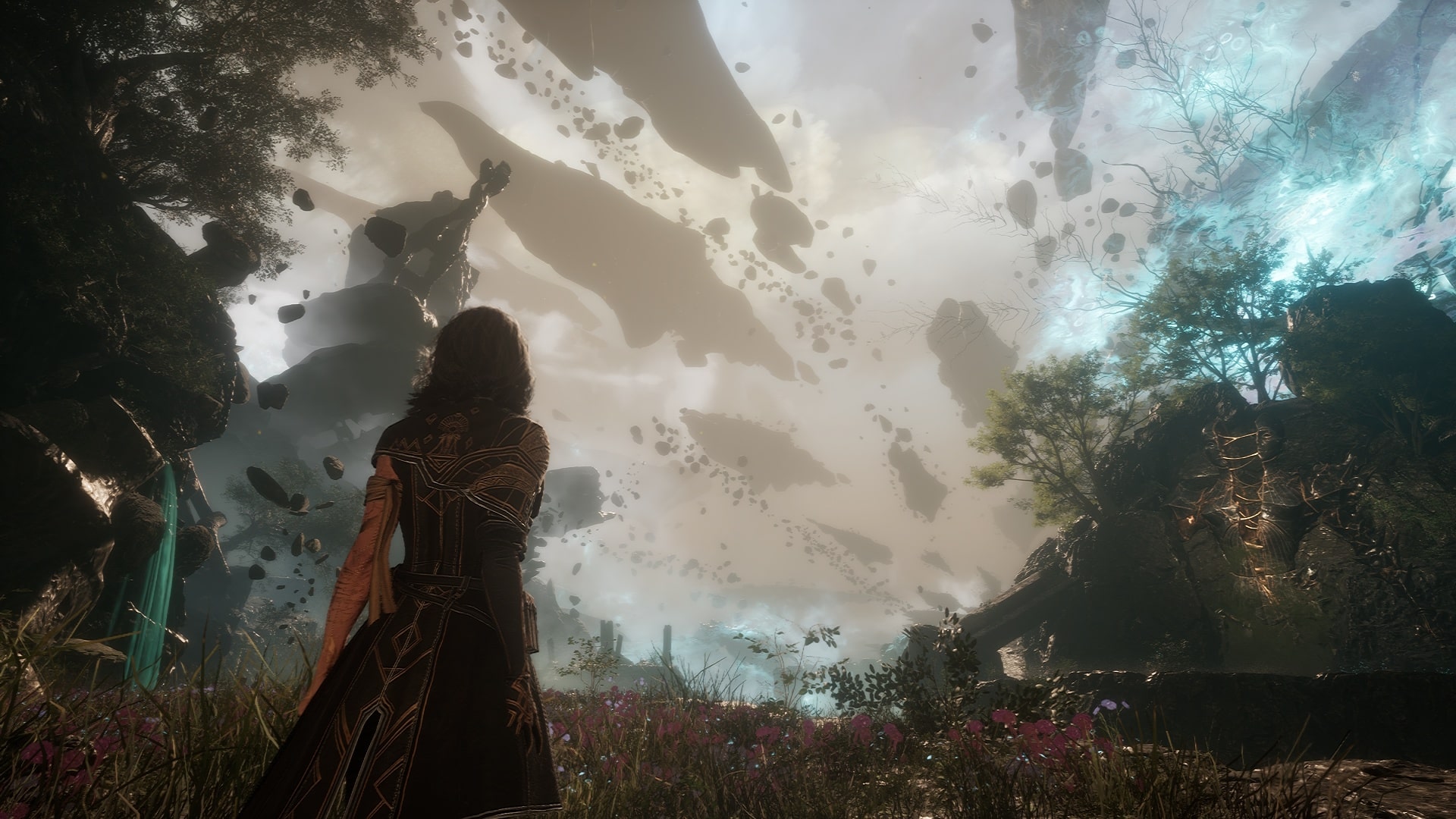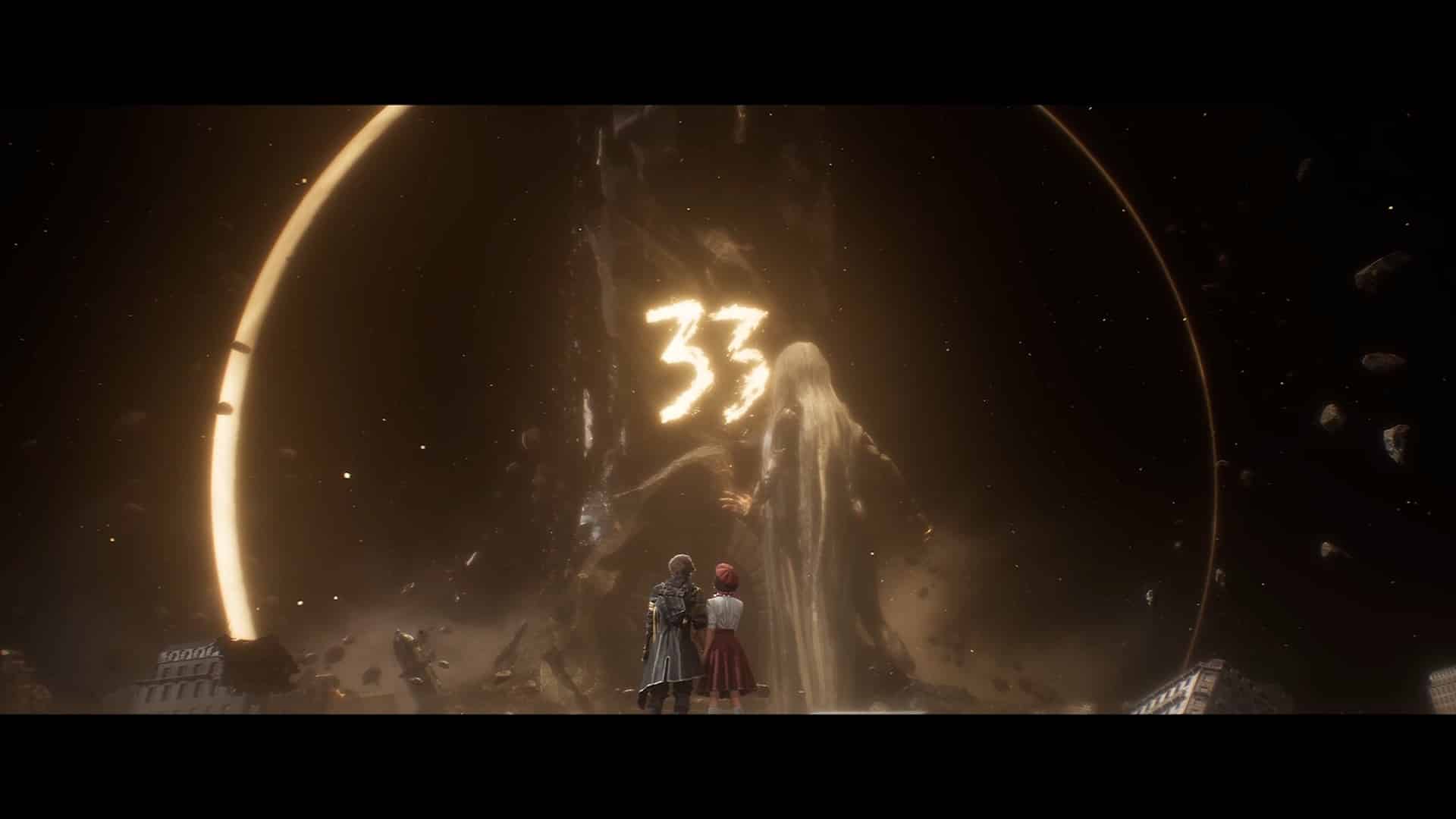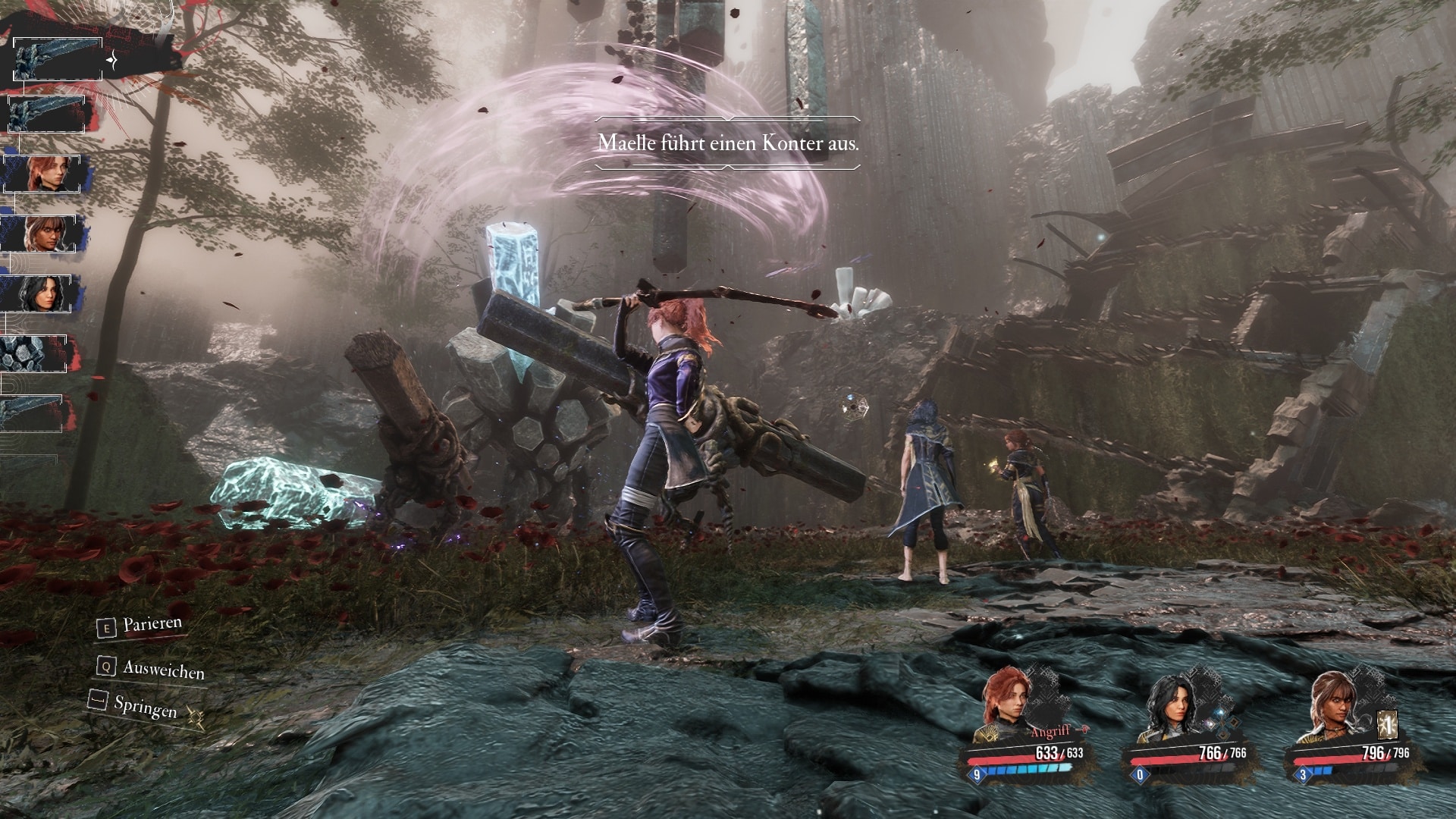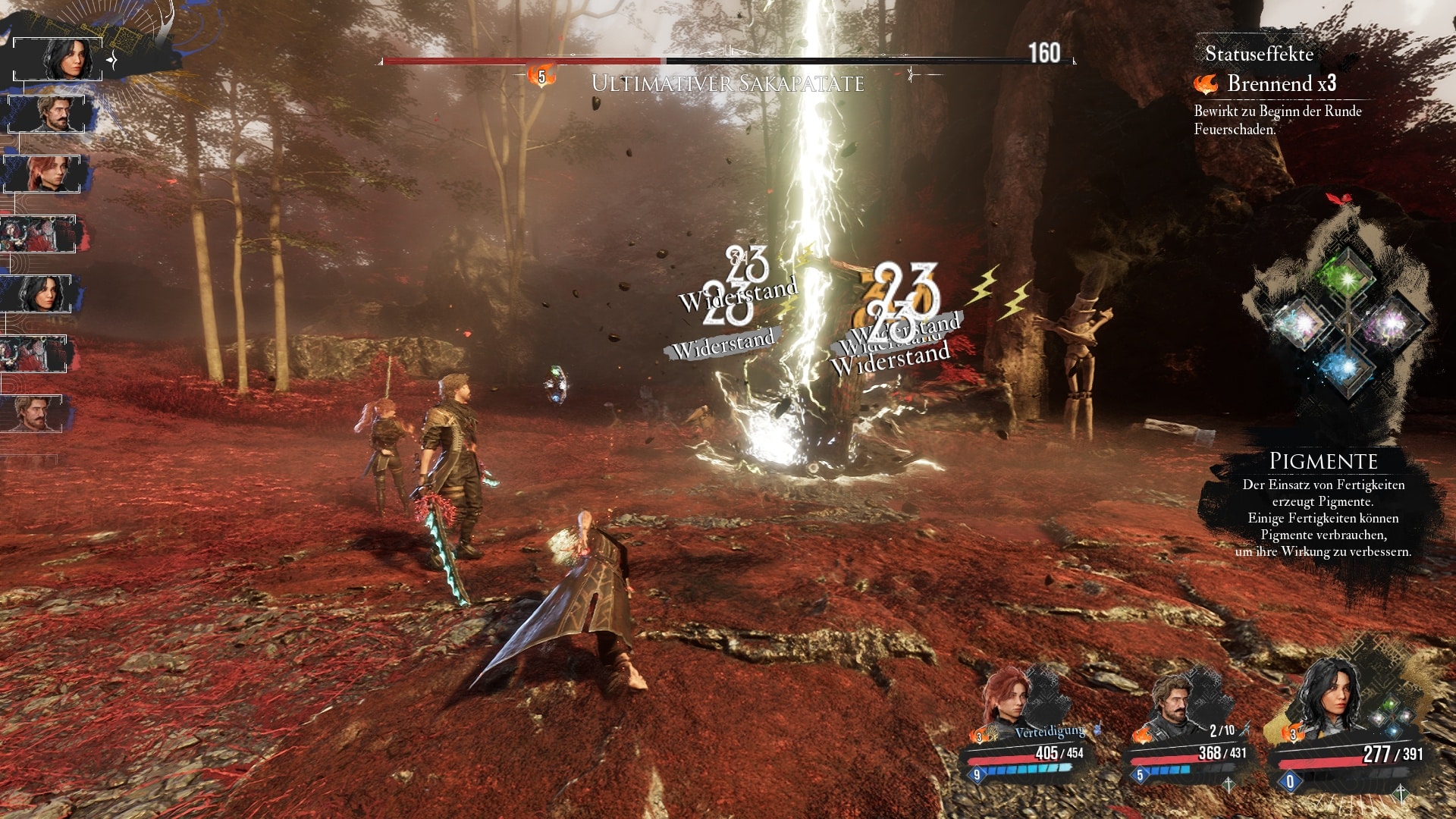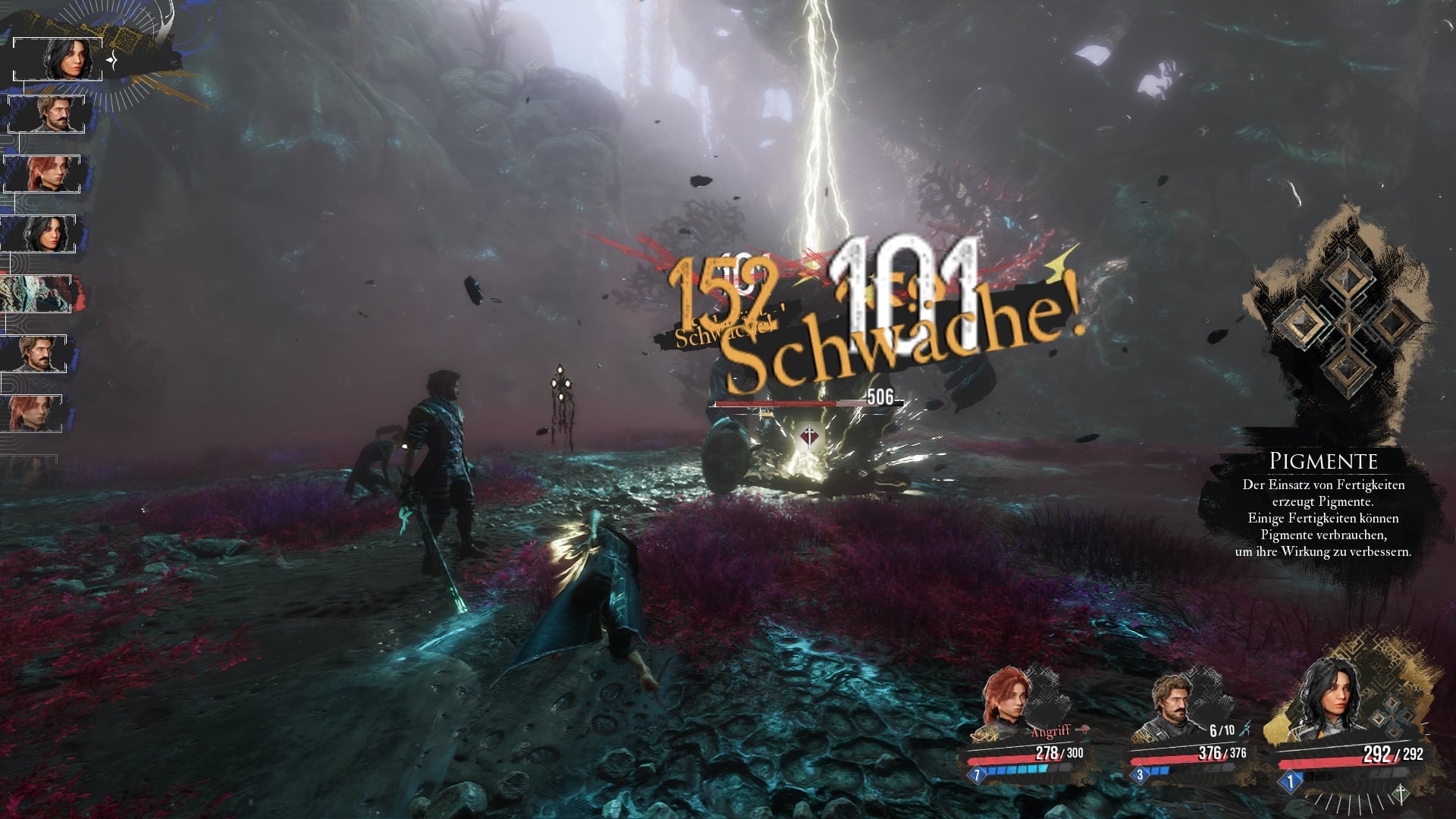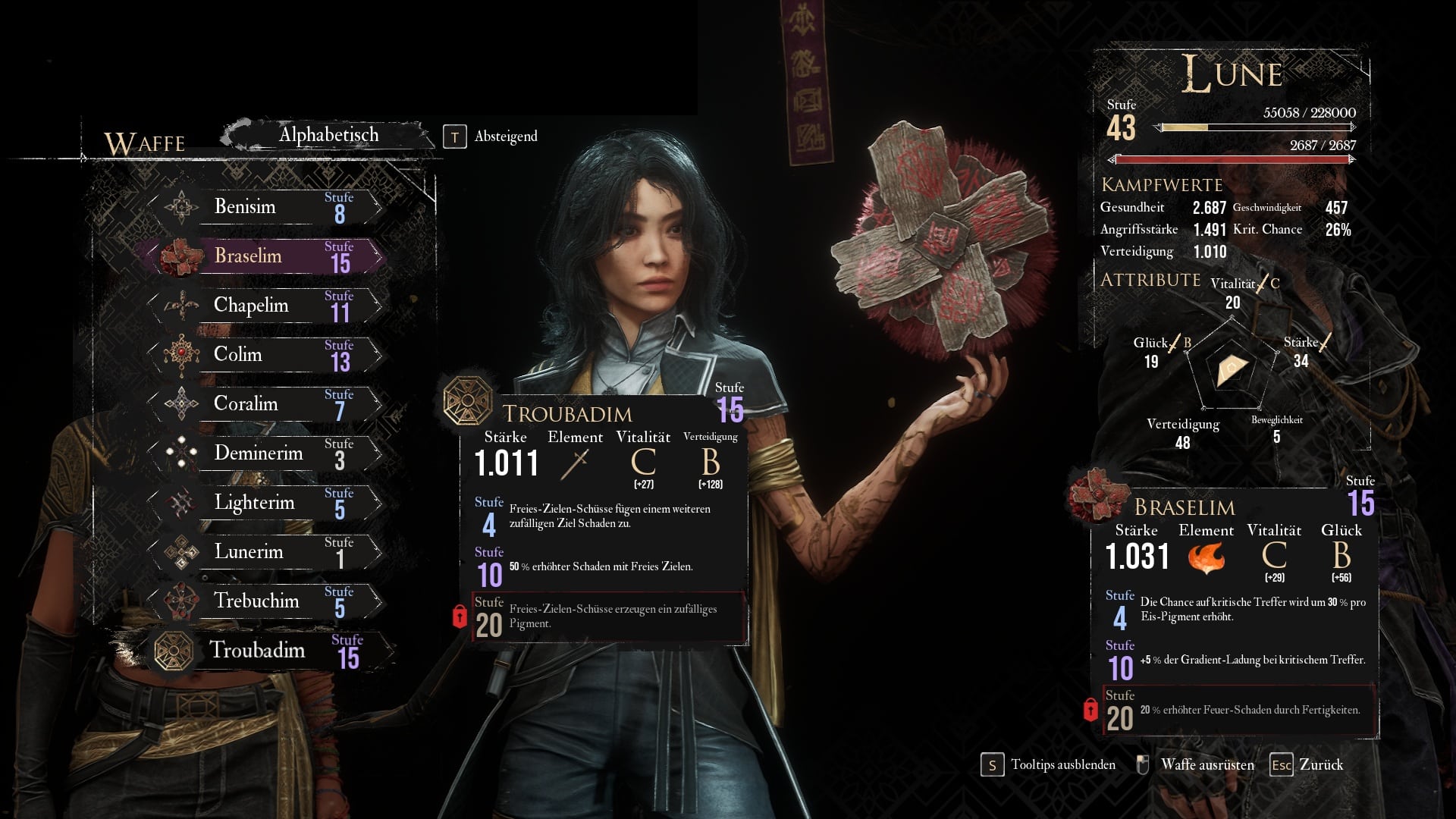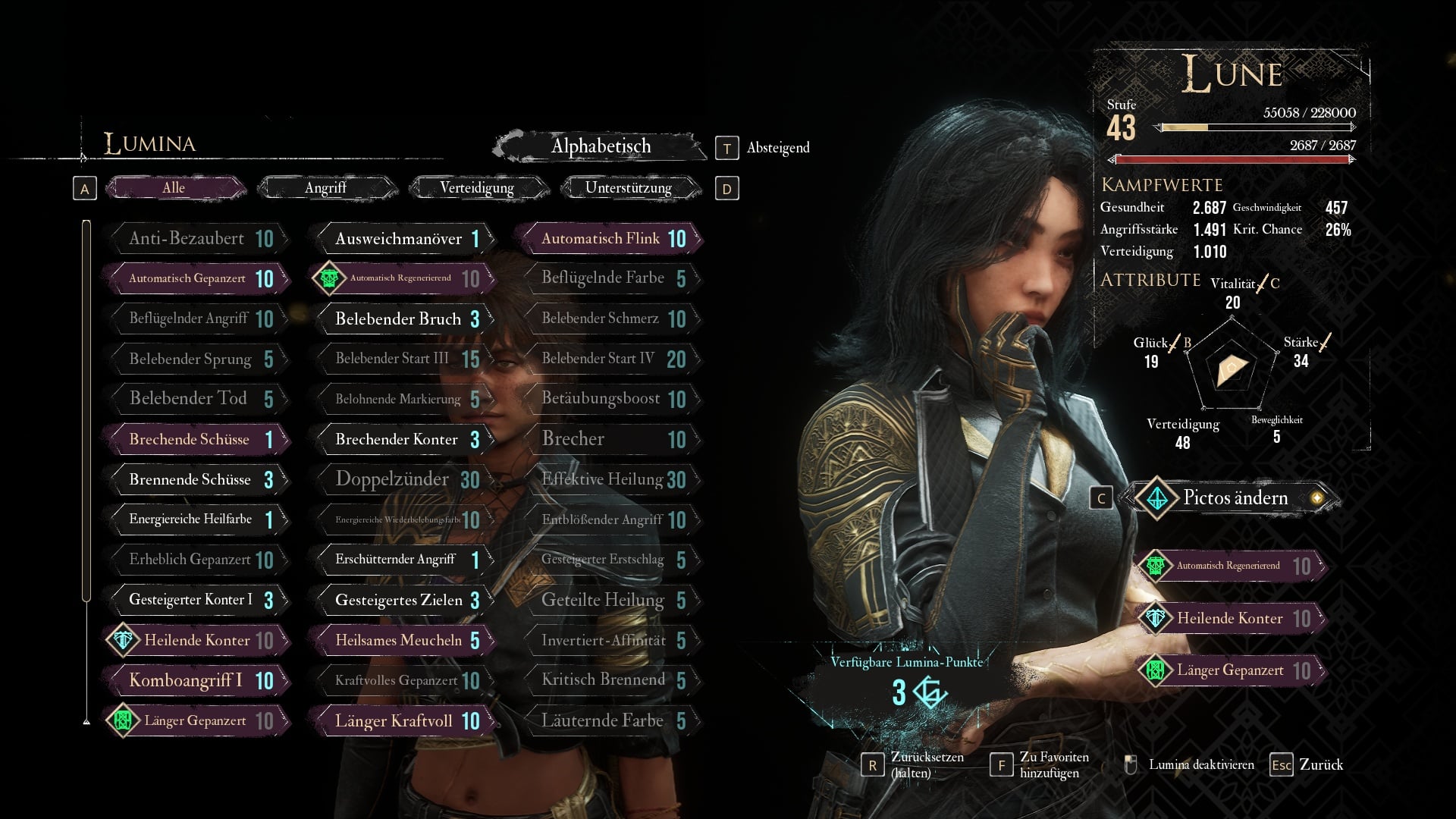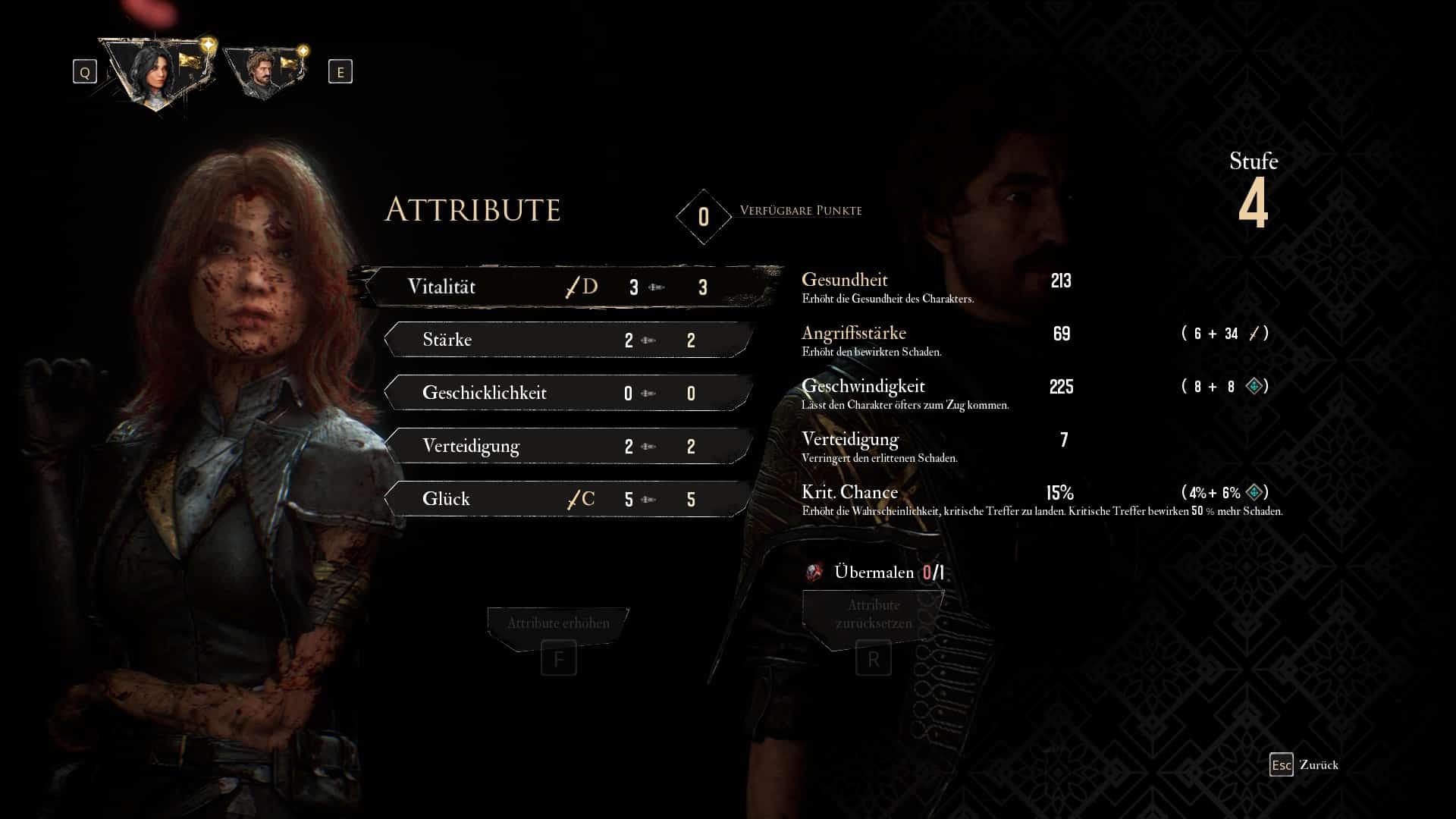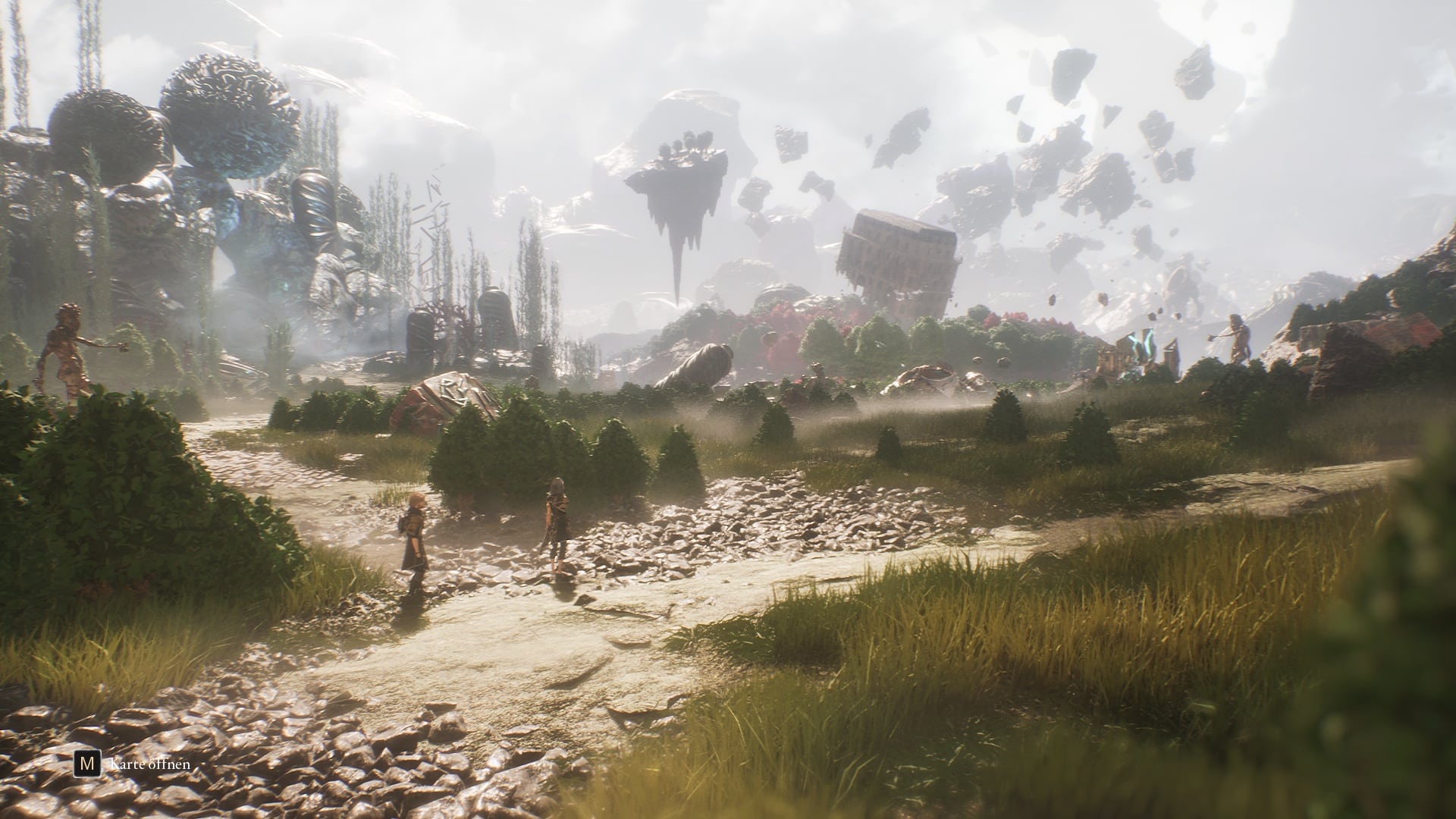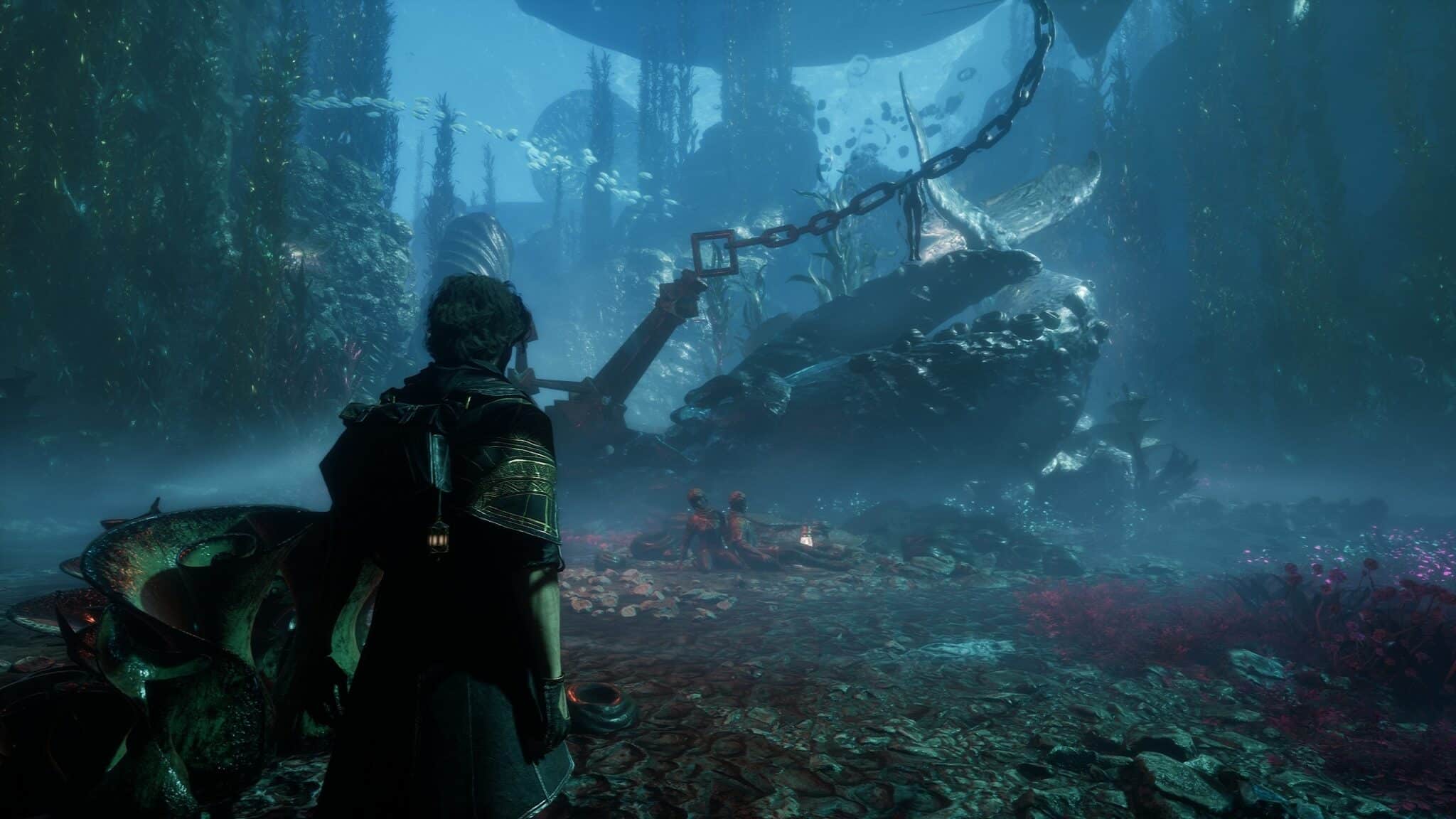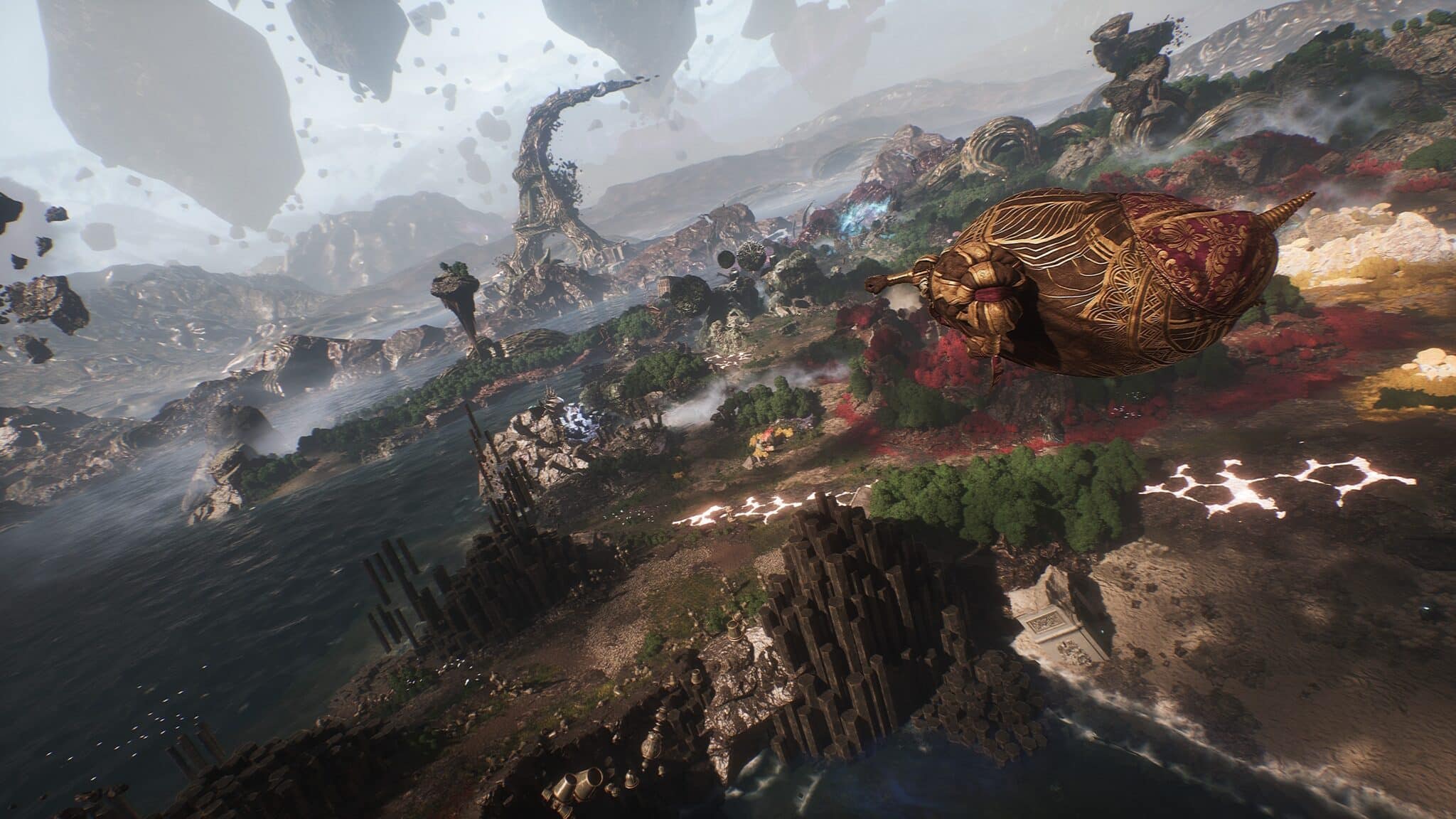Clair Obscur is not a game to play casually – it wants to be understood, discovered, and experienced. Those who take it on will experience one of the most impressive role-playing games in the history of the genre.
There are games that are reminiscent of a relaxed ride on a children’s carousel: leisurely, predictable, nice to look at. And then there’s Clair Obscur, which feels like a roller coaster ride at night from the very first minute – complete with loops, backward sections, accelerations to 120 km/h, and a free fall that will make your heart skip a beat.
As beautiful as the world of Clair Obscur appears at first glance, it is no place for strolling. Behind the dreamy Belle Époque buildings, between the glowing mists and dancing shadows, lurks a game that challenges you again and again and often leaves you stunned.
Clair Obscur doesn’t just tell a story – it sucks you into a mosaic of vivid memories, emotional dialogues, insightful expedition diaries, and fateful encounters. And as you try to piece together the puzzle, you realize that this game has depth. A depth that you don’t just want to discover along the way, but experience fully. And that makes it one of the most extraordinary role-playing games of recent years.
Table of Contents
Age is not just a number
Once a year, a mysterious figure known as “the painter” awakens and decides life and death with a single brushstroke. She paints a number on her monolith, and every person who has passed that age literally disappears into thin air. Year after year, the number decreases, decimating the population of the fictional city of Lumière, which is clearly reminiscent of Paris.
The story begins shortly before the departure of the eponymous Expedition 33. The goal is to stop the painter before she paints again. A task that 67 previous expeditions have failed to accomplish. We accompany Gustave, Maelle, Lune, and their expedition colleagues on their journey to break the deadly cycle.
Spoiler-free review
Much of the fascination of Clair Obscur: Expedition 33 comes from unraveling its secrets yourself. Spoilers can really spoil the fun here. That’s why this review only contains screenshots we took ourselves during the first few hours of gameplay, as well as images published by the developer that don’t reveal anything crucial without context. We have marked the latter accordingly.
In search of answers
Upon arriving on the continent, it becomes clear that this is no ordinary rescue mission. A mysterious white-haired man confronts the expedition and nearly wipes them out completely. As Gustave, you wake up covered in blood and set out to find survivors of the attack.
Much is deliberately left vague at the beginning, but that’s exactly what makes Clair Obscur’s story so appealing. The journey to the monolith and the search for the truth lead through a world full of contradictions, secrets, and loss. Who is the painter? Why does she kill the inhabitants of Lumière every year with a single brushstroke? Why has no expedition ever managed to stop her?
One of the best stories in role-playing game history
Clair Obscur isn’t a story you can sit back and relax with; it’s one you have to lose yourself in to understand. Instead of clear chapters or hours of cutscenes, the game relies on fragmentary storytelling that is strongly reminiscent of FromSoftware titles: expedition logs, short asides in dialogues, cryptic objects, and small details in the game world—all of which become pieces of a larger puzzle.
Unlike Dark Souls and Elden Ring, you can understand the basic outline of the story even if you just stubbornly follow the main mission. However, you’ll miss out on the best part. Those who listen to the characters, read between the lines, and explore every nook and cranny with attentive eyes and ears will be rewarded with a spider’s web of information spread across the entire world, which gradually makes the story more vivid and complete.
Precisely because the game leaves so much open at the beginning, there are real “aha” moments when a long-forgotten dialogue suddenly connects with new fragments of the story or gives the game a completely new twist.
We were particularly captivated by the conversations between the characters: they are approachable, interrupt each other, laugh, remain silent, argue – and in doing so seem more credible and alive than many characters in blockbuster role-playing games. The topics range from everyday concerns to philosophical questions about guilt, meaning, death, and truth. None of it is trivial – every little detail contributes to a better understanding of the world of Clair Obscur.
Belle Époque meets the end of time
Hardly any role-playing game in recent years has drawn you in as quickly as Clair Obscur. The world seems to have fallen out of a romantic, surreal painting, revealing an often disturbing mixture of Belle Époque and dark fantasy: Parisian pomp, elegance, and glamour meet apocalyptic silence, decay, and melancholy. Every scene looks as if an artist’s studio has been brought to life.
Acoustically, too, the game unfolds with a power that is difficult to put into words. The orchestral soundtrack alternates between goose bumps and melancholy, underscoring both big scenes and small, intimate moments.
Together with the excellent English voice acting, featuring top-class actors such as Andy Serkis (Lord of the Rings, Black Panther), Charlie Cox (Daredevil), Jennifer English (Baldur’s Gate 3) and Ben Starr (Final Fantasy 16), the result is an audiovisual maelstrom that you will find difficult to escape – or even want to. One small drawback: there is no German voice acting, but at least the subtitles are very well translated.
In return, the game showers you with spectacularly staged cutscenes. Given the relatively small team and limited budget, the production quality of Clair Obscur is simply incredible. And all this without any bugs or technical problems.
The only compromises are minor, but they are there: the character animations could use a few more details, which is reflected, for example, in the lack of facial expressions outside of cutscenes. And in some regions, it’s quite obvious that they were basically assembled from the same elements over and over again.
Nevertheless, presentation and atmosphere are the game’s greatest strengths and play a decisive role in making the world of Clair Obscur so captivating and unforgettable.
Parry or lose
At first glance, Clair Obscur looks like a classic Japanese role-playing game with turn-based combat. The developers even borrowed the battle screen almost 1:1 from the genre masterpiece Persona 5.
But anyone who relies on just selecting attacks and comfortably munching on a bag of chips will quickly learn better – and will almost certainly get beaten up by the first mini-boss at the latest.
In terms of combat, Clair Obscur is active, demanding, and unforgiving: if you don’t parry, you lose. The many hidden and particularly tough optional bosses in particular like to knock unprepared groups completely off their feet with just one attack.
Each ability in combat costs action points (AP), which can be built up through normal attacks and perfect dodging or parrying. The use of special skills, magic, or particularly powerful attacks therefore requires clever resource management.
At the same time, good timing is essential: the quick-time events require you to give the game your full attention, even during combat. If you dodge or parry at the right moment, you will be rewarded with AP and powerful counterattacks, giving you a decisive advantage, especially in later battles.
Clair Obscur manages to make the battles feel both entertaining and epic. Trash mobs can be knocked out in a matter of seconds, while the frequent and spectacular boss fights often exceed the 15-minute mark.
Trial and Error
Each section of the game surprises you with new enemy types, which is both a blessing and a curse. On the one hand, this keeps the battles challenging until the very end, as each enemy has individual elemental weaknesses and resistances, hidden weak points, unpredictable movement patterns, and powerful special attacks.
On the other hand, this means that you will encounter new enemies more than once that will give you a real beating. “Trial and error” is the name of the game here and is just as much a part of progressing through the game as leveling up your characters.
Dodging and parrying is definitely a challenge in Clair Obscur. As in FromSoftware games, your success depends crucially on reading your enemies’ movement and attack patterns. Cleverly, the three difficulty levels “Story,” “Explorer,” and “Expert” not only affect damage numbers, but also the time windows for dodging and parrying.
Even in Story mode, however, the action elements remain a central part of Clair Obscur. And so, alongside the story, they are the decisive factor in how much you will enjoy the game. Because the truth is, apart from talking, exploring, character management, and fighting, there is little else to do in Clair Obscur. Perhaps with the exception of a few, mostly optional skill passages, which, however, are more annoying than a welcome change due to the terribly imprecise jump controls.
The character system: flexible but challenging
Clair Obscur lets you shape your characters however you want. Each character has their own fighting style, but how you develop and play it is entirely up to you. Gustave, for example, is much slower but more powerful than Maelle, while Lune can deal serious damage to enemies with elemental magic.
Attributes such as vitality, agility, and luck can be developed freely and influence your health, speed, and critical hit chance. In addition, there are so-called Pictos and Lumina, which unlock powerful bonuses and give your characters additional abilities. Each character also has different weapons at their disposal. Oh, and on top of that, there are unique skills that you can use in battle in exchange for AP – everything from multiple attacks to buffs for your group.
When is it worth parrying? When do you need to shoot? Which enemies are particularly vulnerable to elemental damage? How can weapons, pictos, lumina, and attributes be combined to increase the critical hit chance? Which pictos are suitable as counters for the special abilities of a seemingly invincible boss? Only those who can answer these questions will get the most out of the system.
Detours are worthwhile
The world of Clair Obscur is not open, but cleverly intertwined. As you know from classic Japanese role-playing games such as Ni No Kuni or Final Fantasy, there is an overworld map that connects all areas and dungeons. As you progress through the game, you can unlock new ways to travel and return to places you couldn’t access at the beginning of the game.
Even though the main story tells you exactly where to go next, it’s worth venturing off the beaten path. Those who are attentive and curious will be rewarded – not only with weapons and new outfits, but also with new story fragments that will help you understand the world of Clair Obscur a little better.
An extra helping of Souls-like, please
Many aspects of Clair Obscur cry out for a Souls-like comparison, not least the level design. In classic role-playing games, a mini-map with a marker kindly shows you where to go next. In Clair Obscur, you have to figure out for yourself how to get from A to B.
Sometimes you’ll discover a shortcut in the world’s intricate areas that will take you back to the beginning, and sometimes you’ll run straight into a dead end – at the end of which a mini-boss is waiting to give you a good beating.
The paths in Clair Obscur are rarely linear; you often move in loops, go back, open new paths, and connect areas with each other. This is exactly what makes the world organic – you get to know it because you have to explore it yourself.
Playing through once is enough – but you’ll still want more
Clair Obscur is not a short role-playing game for a rainy Sunday afternoon, but one that will easily take up 30 hours of your time just for the main story. If you want to explore hidden areas and really take in all the background information, you can easily spend 40 to 60 hours on it. However, the playing time feels well spent: there is no downtime or unnecessary collection tasks for insignificant NPCs. Only a section here and there that drags on a bit.
What makes replaying the game particularly appealing is the variety of possible builds for your characters. Different attribute and skill point distributions, different combinations of weapons, pictos, and lumina – and you have a completely new gaming experience.
Last but not least, the game also offers a narrative incentive to play through again in the optional New Game Plus mode. Even if you’ve already pieced together the Clair Obscur story puzzle during your first playthrough, you’ll want to dive back into this narrative masterpiece, just like you would with your favorite book or movie.
Editor’s conclusion
Watch out, big guns: Clair Obscur tells one of the best stories I’ve ever experienced in a computer game. Its story is captivating, moving, thought-provoking, and haunts me in my dreams. I find it particularly remarkable how Clair Obscur combines a linear narrative with fragments scattered throughout the game world. It doesn’t just hint at things like Elden Ring, but tells its core story in a very concrete way. At the same time, it leaves me plenty of room for interpretation, but also opportunities to fill it with concrete puzzle pieces. There is a comprehensible explanation for almost everything in this wondrous, fascinating world.
The second great strength of Clair Obscur lies in its character and combat system. Yes, the completely free character development requires some getting used to, but it also allows for a wide variety of build and combat strategies. No two parties are alike here.
At first, I was skeptical as to whether the quick time events would wear thin over time. However, since Clair Obscur works almost entirely without screen displays, at least on the defensive, dodging and parrying feels much more like Elden Ring than God of War and remains consistently exciting.
However, it’s also true that there are no alternatives and combat dominates most of the gameplay. If you don’t enjoy it, even the best story won’t save it. But if both combat and story spark your interest, Clair Obscur will burn itself into your memory forever.


